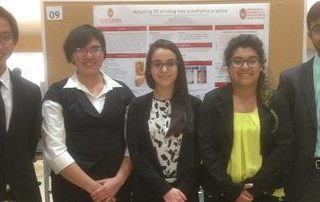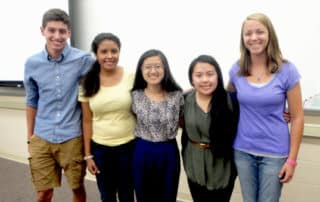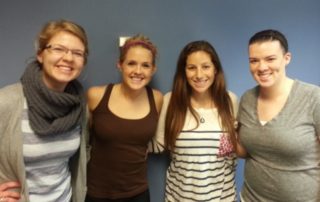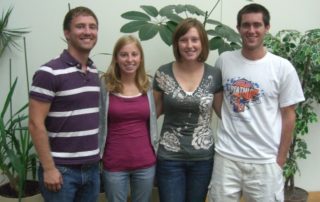Medical Art Prosthetics has been involved in advancing anaplastology as an art, as a profession and as a science. At the same time we hone our skills and shape our professional practices for the benefit of our current patients, we also cultivate opportunities that bring students, scientists, clinicians and engineers into our world of anaplastology.
Our anaplastologists have been recruited to join the clinical faculty of the University of Texas Southwestern Medical Center serving as volunteer faculty in the Division of Surgery, Department of Oral and Maxillofacial Surgery and as adjunct teaching faculty in the Graduate School of Biomedical Sciences Department of Biomedical Communication.
Since 2007 we have initiated anaplastology scientific outreach programs in collaboration with The University of Wisconsin Biomedical Engineering Department’s Student Design Consortium.
The projects initiated and overseen by the clinical anaplastologist have involved physicians, researchers and engineering students.
The list of our projects:
BME 400 Adopting 3D printing into prosthetics practice: from purchase to first printed prototype | Fall 2015
Prosthetics and anaplastology are fields that increasing must utilize surface scanning and 3D printing technologies for the design, fabrication and fitting of restorative prostheses and related components and devices. The anaplastologist/prosthetist wishes to purchase equipment and the BME student is called upon to research hand held scanners and ...
BME 301 Individualized functional finger prosthesis | Spring 2015
Finger prostheses have been provided to individuals who have sustained amputation of their fingers. Due to the inherent difficulty of retaining finger prostheses securely to restore grip strength and function many efforts to restore the finger have shifted focus toward cosmesis. These aesthetic silicone prostheses can be detailed ...
BME 200/300 Individualized functional finger prosthesis | Fall 2014
Finger prostheses have been provided to individuals who have sustained amputation of their fingers. Due to the inherent difficulty of retaining finger prostheses securely to restore grip strength and function many efforts to restore the finger have shifted focus toward cosmesis. These aesthetic silicone prostheses can be detailed ...
BME 301 Magnetic Retention of Facial Prostheses to Body Piercings | Spring 2013
The Medical Art Prosthetics Clinic creates amazing facial prostheses that enhance the lives of people affected by accidents, birth defects, or other health complications. Current application methods for attaching prostheses to the face include surgical placement of bone-anchored magnetic implants or use of an adhesive. Surgical placement of ...
BME 300 Passive-locking implant-retained auricular prosthesis attachment | Fall 2011
Project Overview A client has expressed interest in improving on the current design of an auricular prosthetic - specifically a Vistafix System by Cochlear. An undesirable feature of the current design is its failure to remain attached when unexpected forces act on it. The current design relies on ...
BME 404 Attachment of Prosthetic Ear to Cranial Implant Abutments | Spring 2011
Greg Gion of Medical Art Prosthetics is looking for a new attachment method for auricular prostheses. A new attachment method is desired because the current bar-clip method and the magnet-abutment method are either too strong or too weak, respectively. These methods compromise the effectiveness of the prosthetic ear ...
Featured Articles and Publications:
- Gion GG. “Surgical versus prosthetic reconstruction of microtia: The case for prosthetic
reconstruction†Journal of Oral and Maxillofacial Surgery 64: 1639-1654, 2006. - Miles BA, Sinn DP, Gion GG. “Experience with cranial implant-based prosthetic reconstructionâ€.
J Craniofacial Surg. 2006 Sep; 17(5): 889-97. - Butler, M.D., David F, Gion, GG, Rapini, RD. “Silicone auricular prosthesisâ€. Journal of the American
Academy of Dermatology (October 2000. - Gion, Gregory G. Chapter entitled “Orbital Prosthetics.†Principles and Practice of Ophthalmic Plastic and Reconstructive Surgery, Edited by Stephen L. Bosniak. 1995.
- “The United States and Swedish Experience with Osseointegration and Facial Prostheses.†The International Journal of Oral and Maxillofacial Implants, Vol. 6, Number 1 (1991).
- “Osseointegration and Facial Prosthetics.†The International Journal of Oral and Maxillofacial Implants, Vol. 1, Number 1.







